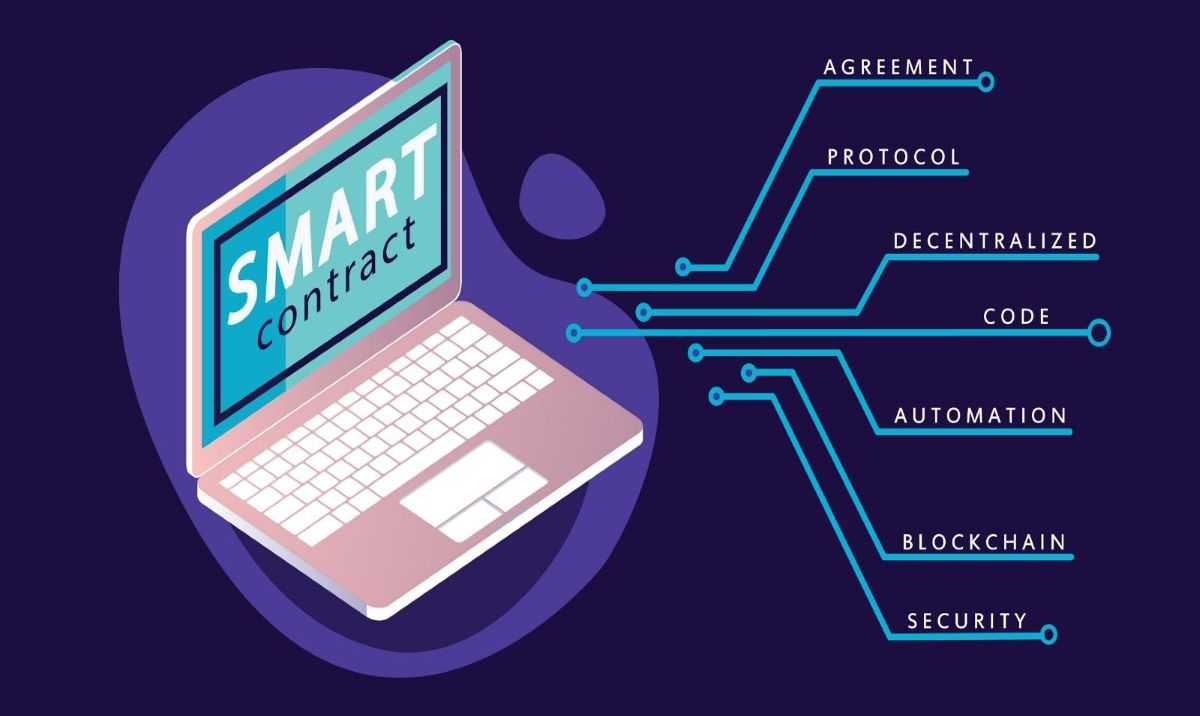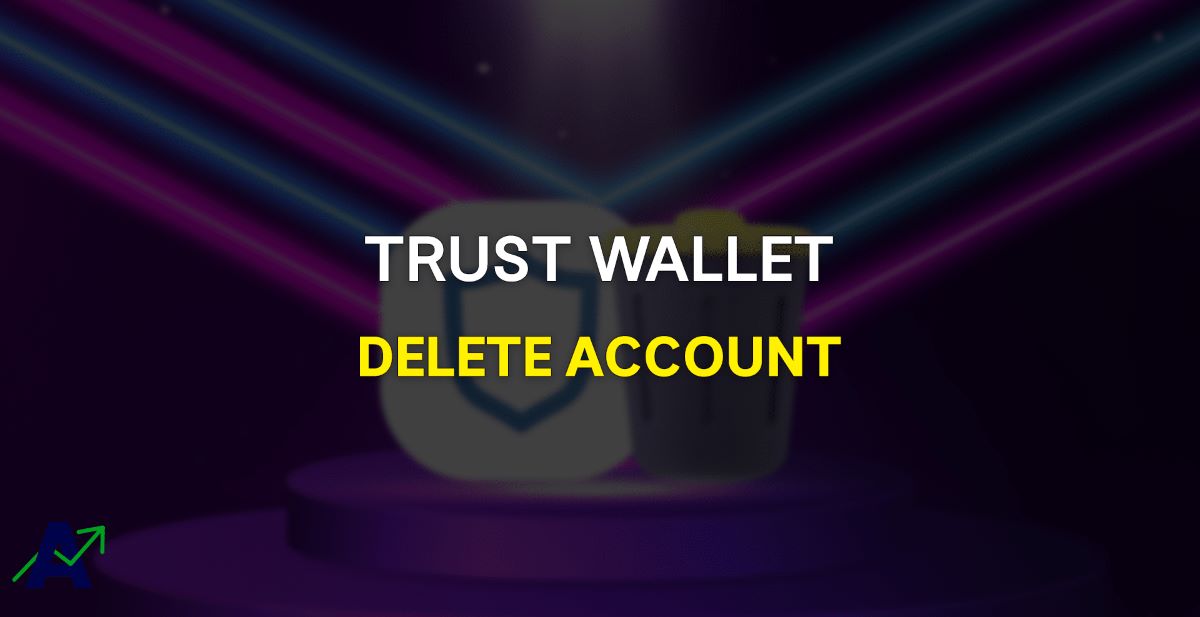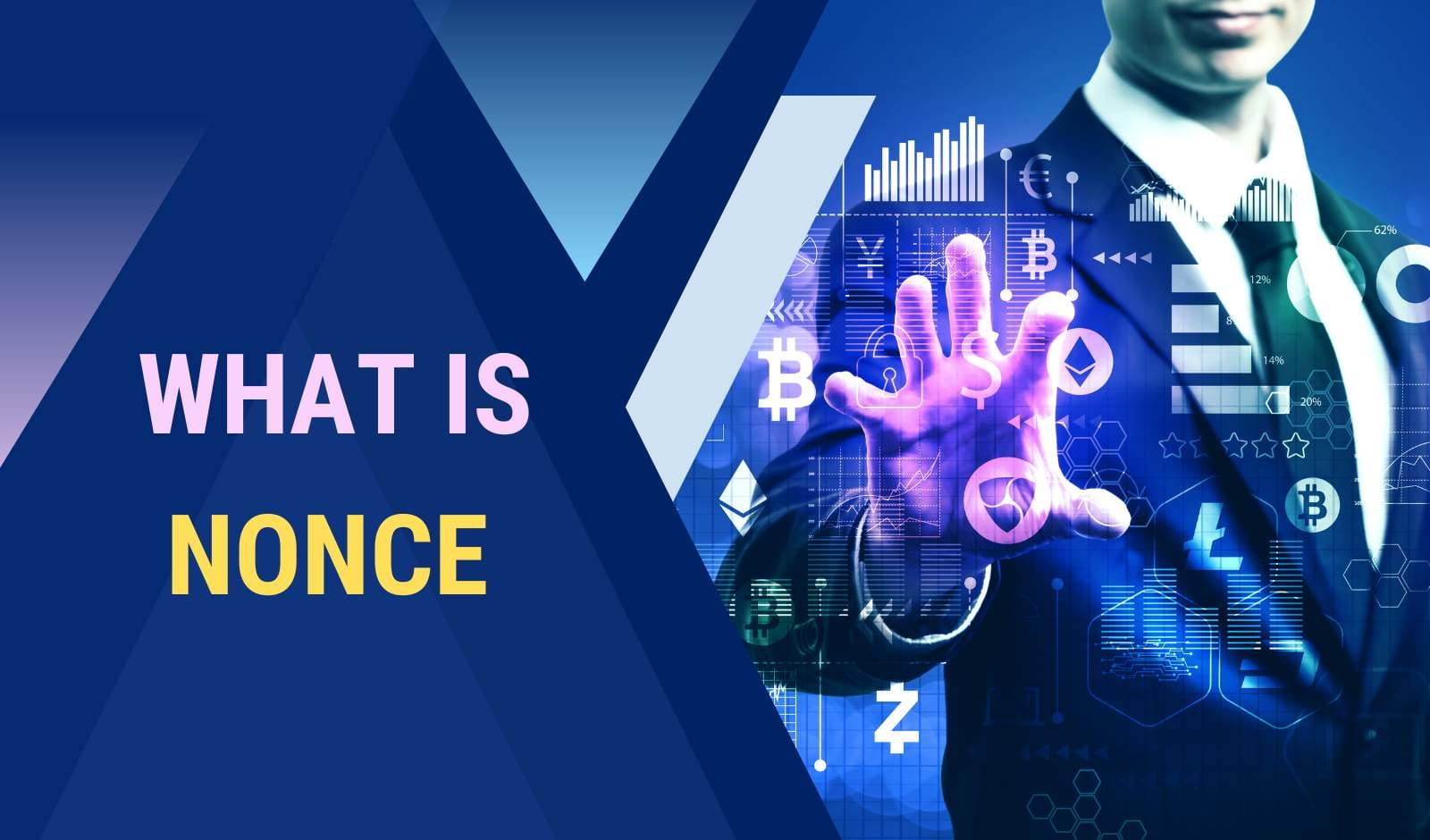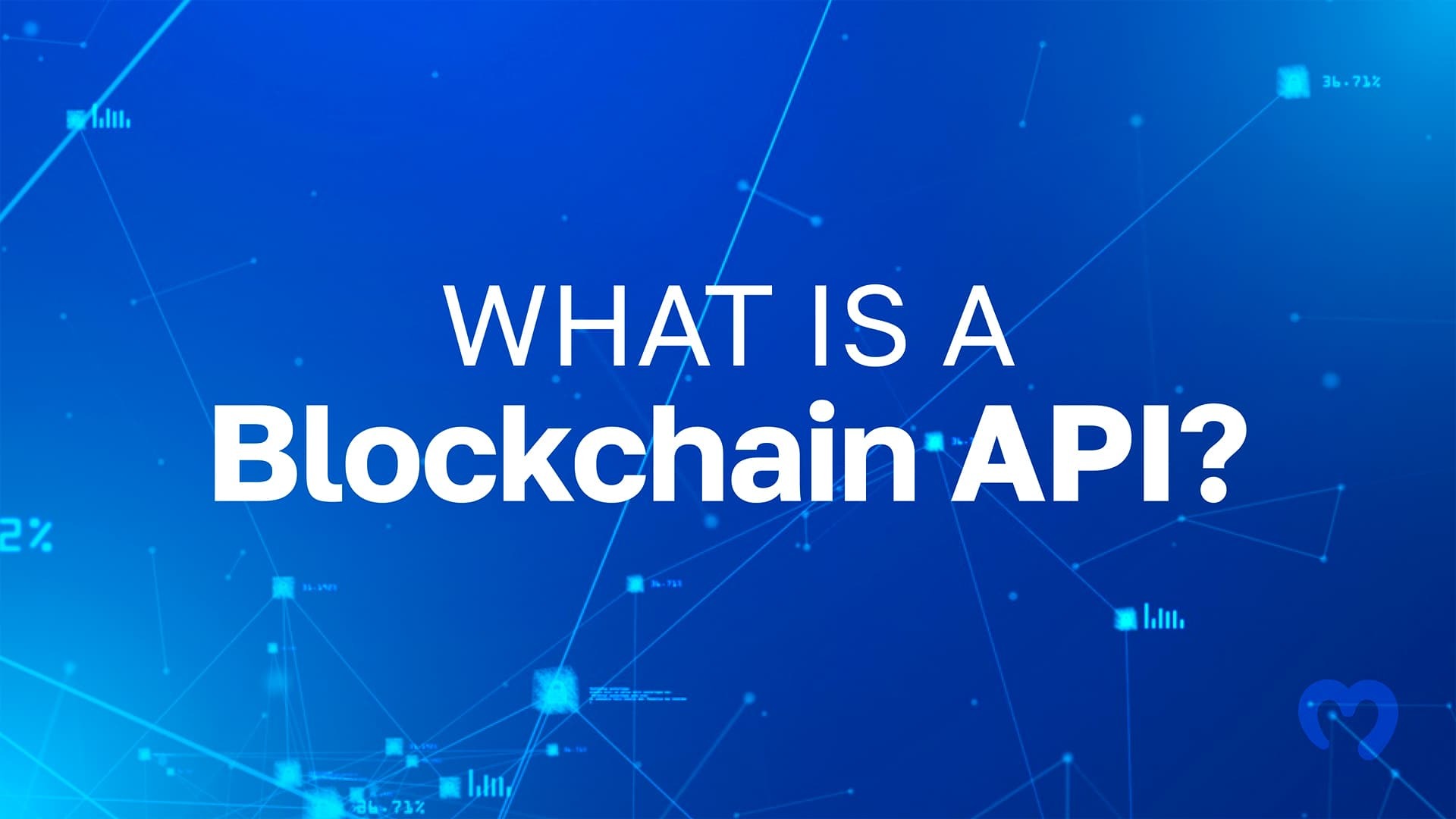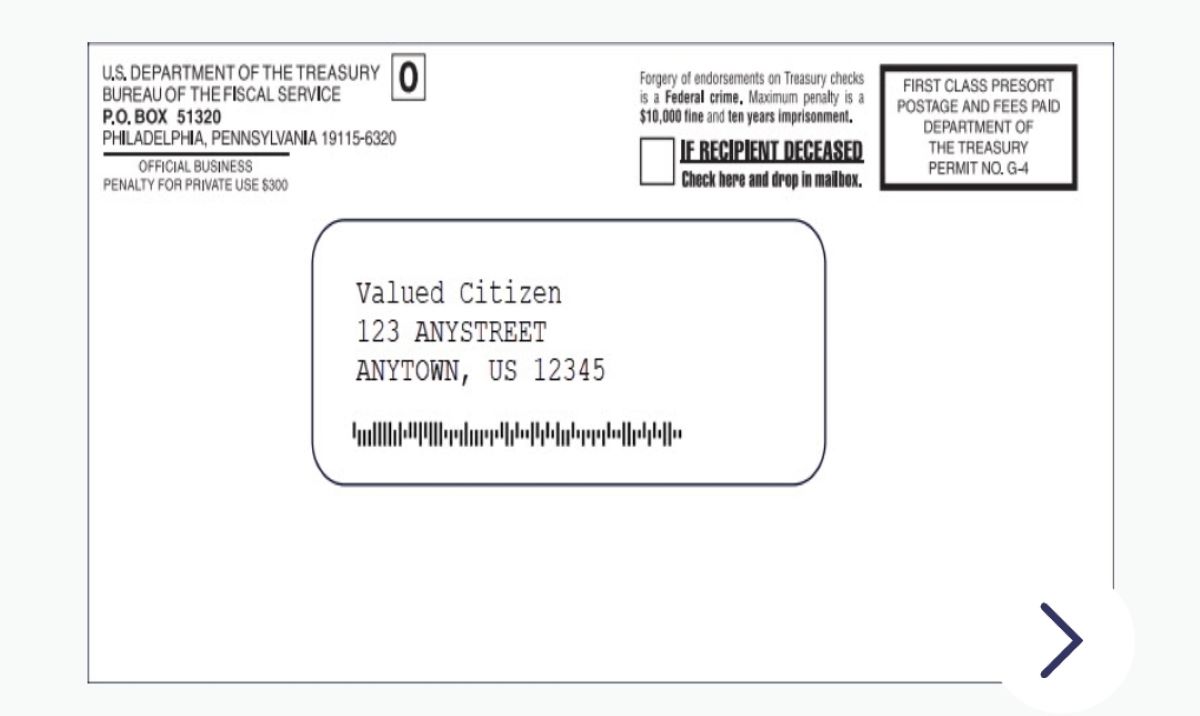

Finance
How Blockchain Will Change The World
Published: October 23, 2023
Discover the transformative power of blockchain in the finance industry. Learn how this technology is set to revolutionize the way we manage and secure financial transactions.
(Many of the links in this article redirect to a specific reviewed product. Your purchase of these products through affiliate links helps to generate commission for LiveWell, at no extra cost. Learn more)
Table of Contents
- Introduction
- Key Concepts of Blockchain
- Advantages of Blockchain Technology
- Applications of Blockchain in Various Industries
- Impact of Blockchain on Finance
- Blockchain and Supply Chain Management
- Blockchain and Healthcare
- Blockchain and Voting Systems
- Blockchain and Intellectual Property Rights
- Challenges and Limitations of Blockchain
- Future Possibilities of Blockchain Technology
- Conclusion
Introduction
Blockchain technology has been hailed as a groundbreaking innovation that has the potential to revolutionize various industries. While most commonly associated with cryptocurrencies like Bitcoin, blockchain has far-reaching implications beyond the realm of finance. Its decentralized, transparent, and secure nature has the power to transform the way we conduct transactions, share information, and establish trust in the digital age.
At its core, blockchain is a distributed ledger that records and validates transactions across multiple computers. Unlike traditional centralized systems, where information is stored on a single server, blockchain allows for a network of computers to collectively maintain and verify the accuracy of data. This eliminates the need for intermediaries, such as banks or government institutions, and enables peer-to-peer transactions with increased efficiency and security.
The key concept behind blockchain technology is the use of cryptographic algorithms to create a chain of blocks, where each block contains a list of transactions. Once a block is added to the chain, it becomes permanent and cannot be altered without consensus from the network participants. This immutability ensures data integrity and prevents fraudulent activities.
One of the main advantages of blockchain technology is its transparency. Since all transactions are recorded on a public ledger, anyone can view and verify the information. This fosters trust among participants, as it removes the need for blind faith in centralized authorities. Additionally, the use of cryptographic techniques ensures that the data is securely encrypted, making it nearly impossible for unauthorized parties to tamper with or manipulate the records.
Blockchain technology has the potential to disrupt various industries, including finance, supply chain management, healthcare, and voting systems. In the finance sector, blockchain can streamline cross-border transactions, eliminate intermediaries, and reduce costs. It also enables the creation of smart contracts, self-executing agreements that automatically trigger actions when predetermined conditions are met.
In supply chain management, blockchain can provide end-to-end visibility and traceability, helping to prevent fraud and counterfeiting. It allows for the secure and efficient transfer of goods and reduces administrative burdens.
In the healthcare industry, blockchain can improve data interoperability and enhance the security of medical records. It enables patients to have greater control over their personal health information and ensures that sensitive data is securely shared between healthcare providers.
Another area where blockchain technology can make a significant impact is in voting systems. By leveraging blockchain’s immutable and transparent nature, it is possible to create secure and fraud-resistant voting platforms that can enhance trust and increase participation in democratic processes.
Furthermore, blockchain technology can play a crucial role in protecting intellectual property rights. By creating verifiable timestamps and records of creation, blockchain can help establish the ownership and authenticity of digital assets, such as patents, copyrights, and trademarks.
However, it is important to acknowledge that blockchain technology also faces challenges and limitations. These include scalability issues, regulatory hurdles, energy consumption concerns, and the potential for criminal activities in anonymous transactions.
Despite these challenges, the future possibilities of blockchain technology are vast. From revolutionizing financial systems to transforming supply chains and healthcare, blockchain has the potential to reshape our world in profound ways. As the technology continues to evolve and mature, it will be exciting to witness its impact on various industries and the possibilities it holds for a more transparent, secure, and decentralized future.
Key Concepts of Blockchain
In order to fully understand the implications and potential of blockchain technology, it is essential to grasp its key concepts. These concepts form the foundation of how blockchain operates and enable its unique features. Here are some of the fundamental concepts of blockchain:
- Decentralization: One of the defining features of blockchain is its decentralized nature. Unlike traditional centralized systems, where data is stored in a central authority, blockchain operates on a network of computers known as nodes. These nodes work together to validate and verify transactions, ensuring the integrity and security of the data.
- Distributed Ledger: A blockchain is essentially a distributed ledger that records and stores a series of transactions. Each transaction is bundled into a block and added to the existing chain in a linear and chronological order. This creates a transparent and immutable record of all transactions, providing an audit trail that can be verified by anyone on the network.
- Consensus Mechanism: Consensus mechanisms are used in blockchain to achieve agreement among the network participants on the validity of transactions. Various consensus mechanisms, such as Proof of Work (PoW) and Proof of Stake (PoS), are employed to ensure that the majority of network participants agree on the state of the blockchain. This prevents fraud, double-spending, and other malicious activities.
- Cryptography: Cryptography plays a crucial role in securing the data stored on the blockchain. Encryption techniques are used to protect the privacy of transaction details and ensure that only authorized parties can access and verify the information. Cryptographic algorithms, such as digital signatures and hash functions, are used to create unique identifiers for each block and transaction, enhancing the security and integrity of the blockchain.
- Smart Contracts: Smart contracts are self-executing agreements that are stored and executed on the blockchain. These contracts are programmed with a set of conditions and actions that are automatically triggered when the predetermined conditions are met. Smart contracts enable trustless and transparent interactions between parties, as the execution of the contract is based on predefined rules rather than relying on intermediaries.
These key concepts work in harmony to create a robust and secure blockchain system. The decentralized nature of blockchain ensures that no single entity has control over the network, making it resilient to censorship and single points of failure. The distributed ledger provides transparency and accountability, as all participants have access to the same set of data. Consensus mechanisms ensure agreement on the validity of transactions, preventing tampering and fraud. Cryptography protects the privacy and integrity of the data, while smart contracts automate and enforce the execution of agreements.
Understanding these key concepts is essential for harnessing the full potential of blockchain technology. By incorporating these concepts into various industries and applications, we can unlock new possibilities for transparency, efficiency, and trust in the digital age.
Advantages of Blockchain Technology
Blockchain technology offers numerous advantages that make it a powerful tool for revolutionizing various industries. Here are some of the key advantages of blockchain:
- Decentralization and Transparency: Blockchain operates on a decentralized network, eliminating the need for a central authority. This decentralization enhances transparency since all participants have access to the same set of data. Transactions and records on the blockchain are verifiable and cannot be easily altered, ensuring trust and reducing the reliance on intermediaries.
- Enhanced Security: Blockchain employs cryptographic algorithms to secure data and transactions. Each block is linked to the previous block through a cryptographic hash, creating a tamper-resistant chain. Additionally, the use of digital signatures further verifies the authenticity of transactions. The decentralized nature of blockchain also makes it more resilient to cyberattacks, as there is no central point of failure.
- Immutable Record Keeping: Once information is recorded on the blockchain, it cannot be easily modified or deleted. This immutability ensures the integrity of data, making it valuable for industries that rely on accurate and auditable records. It also eliminates the risk of fraudulent activities and tampering, providing a reliable source of truth.
- Efficiency and Cost Reduction: Blockchain can streamline processes and eliminate the need for intermediaries, reducing costs and improving efficiency. By removing the middlemen in transactions, such as banks or payment processors, blockchain enables direct peer-to-peer transactions. It also automates processes with the use of smart contracts, reducing manual errors and overhead costs.
- Traceability and Auditability: The transparent nature of blockchain allows for easy traceability of transactions. Each transaction is recorded on the blockchain, creating a permanent and auditable record. This feature is particularly valuable in industries such as supply chain management, where tracking the origin and movement of goods is crucial.
- Increased Trust and Collaboration: Blockchain builds trust among participants by providing a transparent and verifiable record of transactions. With blockchain, trust is established through consensus mechanisms rather than relying on trust in central authorities. This opens up new opportunities for collaboration among parties who may not fully trust or know each other.
These advantages have the potential to transform various industries by providing more secure, efficient, and transparent systems. Financial institutions can benefit from faster and cheaper cross-border transactions, while supply chain management can achieve greater traceability and reduce fraud. Blockchain technology also holds promise in areas such as healthcare and voting systems, where data privacy and security are paramount.
However, it is important to acknowledge that blockchain is not a one-size-fits-all solution and may not be suitable for every use case. Factors such as scalability, regulatory compliance, and energy consumption should be considered when implementing blockchain solutions.
Despite these considerations, the advantages of blockchain technology make it an exciting tool with the potential to disrupt and transform various industries. Its ability to enhance transparency, security, and efficiency opens up new possibilities for trust and collaboration in the digital era.
Applications of Blockchain in Various Industries
Blockchain technology has the potential to revolutionize multiple industries by providing secure, transparent, and efficient solutions. Here are some of the key applications of blockchain in various sectors:
- Finance: The financial industry was the first to embrace blockchain with the emergence of cryptocurrencies like Bitcoin. Blockchain technology can streamline cross-border transactions, reduce transaction costs, and eliminate the need for intermediaries such as banks. It also enables the creation of decentralized finance (DeFi) platforms, offering financial services like lending, borrowing, and trading without the need for traditional financial intermediaries.
- Supply Chain Management: Blockchain provides end-to-end visibility and traceability in the supply chain industry. It allows for secure and efficient tracking of goods and ensures transparency by recording each transaction at every stage of the supply chain. This helps prevent fraud, counterfeiting, and unauthorized modification of records. Additionally, blockchain can enable automated smart contracts that automatically trigger actions based on predefined conditions, improving efficiency and reducing manual errors.
- Healthcare: Blockchain has the potential to transform healthcare by improving data interoperability, security, and patient privacy. It allows for secure sharing of medical records between healthcare providers, ensuring that sensitive patient data is accessed only by authorized parties. Blockchain can also enhance the integrity of clinical trials, pharmaceutical supply chains, and medical research by securely recording and verifying data.
- Voting Systems: Blockchain can address many of the challenges associated with traditional voting systems. By leveraging its transparency, immutability, and verifiability, blockchain can create secure and tamper-resistant voting platforms. These platforms can enhance trust, improve the accuracy of vote counting, and increase participation in democratic processes.
- Intellectual Property Rights: Blockchain can help protect intellectual property rights by creating a secure and immutable record of creations and transactions. With blockchain, creators can timestamp and verify the authenticity of their digital assets, such as patents, copyrights, and trademarks. This can prevent plagiarism, unauthorized use, and infringement of intellectual property.
- Energy Trading: Blockchain can revolutionize the energy sector by enabling peer-to-peer energy trading and decentralized management of energy grids. By utilizing smart contracts, individuals and businesses can directly trade excess energy generated from renewable sources, reducing the reliance on centralized energy providers.
These applications of blockchain showcase the versatility and potential of the technology to disrupt and improve various industries. As blockchain continues to mature and evolve, we can expect to see even more innovative use cases and solutions emerge.
Impact of Blockchain on Finance
Blockchain technology has the potential to have a significant impact on the financial industry, transforming the way we transact, store value, and interact with financial systems. Here are some of the key ways in which blockchain is set to revolutionize finance:
- Efficient Cross-Border Transactions: Traditional cross-border transactions can be slow, costly, and dependent on intermediaries such as banks. Blockchain technology enables faster and more cost-effective cross-border transactions by eliminating intermediaries and reducing processing times. With blockchain, transactions can be conducted directly between parties, reducing fees and settlement times.
- Reduced Settlement Times: Blockchain can significantly reduce settlement times for financial transactions. Traditional settlement processes can take days or even weeks to complete, leading to delays and liquidity issues. With blockchain, settlements can be near-instantaneous, as transactions are validated and recorded on the blockchain in real-time.
- Increased Transparency: Blockchain provides a high level of transparency in financial transactions. All transactions are recorded on a shared ledger, accessible to all participants on the network. This transparency reduces the risk of fraud and enhances trust among participants. Additionally, the immutable nature of blockchain ensures that transaction records cannot be easily altered, providing an auditable and trustworthy source of information.
- Smart Contracts: Blockchain allows for the creation and execution of smart contracts, which are self-executing agreements with predefined conditions. These contracts can automate various financial processes, such as payment settlements, asset transfers, and compliance checks. Smart contracts ensure that transactions are executed only when predetermined conditions are met, reducing the need for intermediaries and increasing efficiency.
- Access to Financial Services: Blockchain has the potential to provide access to financial services for the unbanked and underbanked population. With blockchain, individuals can have control over their financial assets without the need for traditional banking institutions. This can empower individuals in developing countries, where access to banking services may be limited.
- Decentralized Finance (DeFi): Blockchain has given rise to the concept of decentralized finance (DeFi), which aims to transform traditional financial systems into open and permissionless ecosystems. DeFi eliminates intermediaries and enables individuals to participate in activities such as lending, borrowing, and trading without relying on centralized institutions. It offers greater financial inclusivity, transparency, and accessibility.
The impact of blockchain on finance is already being witnessed through the adoption of cryptocurrencies like Bitcoin and the emergence of blockchain-based financial platforms. However, there are challenges to overcome, such as scalability, regulatory frameworks, and interoperability with existing financial systems. Despite these challenges, the potential for blockchain to revolutionize finance by increasing efficiency, reducing costs, and enhancing security and transparency is immense.
As blockchain technology continues to evolve and mature, it will likely pave the way for new financial innovations and disrupt traditional financial systems, creating a more inclusive and efficient financial landscape.
Blockchain and Supply Chain Management
Blockchain technology has the potential to revolutionize supply chain management by providing transparency, traceability, and efficiency across the entire supply chain. By leveraging blockchain, businesses can create a secure and immutable record of transactions, ensuring trust among participants and reducing fraud. Here are some key ways in which blockchain is transforming supply chain management:
- End-to-End Visibility: Blockchain enables end-to-end visibility in supply chains by recording each transaction at every stage. This allows businesses to track the origin, movement, and condition of goods throughout the supply chain. With blockchain, participants can have a comprehensive view of the entire supply chain, reducing the risk of counterfeit products and improving overall supply chain efficiency.
- Enhanced Traceability: Blockchain provides traceability of products from their source to the end consumer. Each transaction on the blockchain is recorded and linked to the previous transaction, creating an auditable and transparent trail. This becomes crucial in industries such as food and pharmaceuticals, where traceability ensures product authenticity, quality, and safety.
- Reduced Fraud and Counterfeiting: Supply chain fraud and counterfeiting are significant challenges for businesses. Blockchain technology can address these issues by providing an immutable record of transactions. The transparency of blockchain allows participants to verify the authenticity and legitimacy of products, reducing the risk of counterfeit goods entering the supply chain.
- Streamlined Processes: Blockchain can streamline supply chain processes by eliminating paperwork, reducing administrative burdens, and automating manual tasks. Smart contracts on the blockchain can automatically trigger actions when predefined conditions are met, such as payment release or inventory replenishment. This reduces the need for intermediaries and manual interventions, resulting in increased efficiency.
- Efficient Inventory Management: By leveraging blockchain, businesses can have real-time visibility into inventory levels and movements. This enables efficient inventory management, reducing stockouts and overstocking. With a transparent view of inventory across the supply chain, businesses can optimize their inventory levels and improve overall operational efficiency.
- Supplier Management: Blockchain technology can enhance supplier management by providing a secure and transparent platform for supplier information and performance tracking. By recording supplier transactions on the blockchain, businesses can ensure compliance, track supplier performance, and reduce disputes. This improves trust and collaboration between suppliers and buyers.
Despite the numerous benefits, implementing blockchain in supply chain management comes with challenges, including interoperability with existing systems, standardization of data formats, and privacy concerns. However, the potential for blockchain to revolutionize supply chain management through enhanced transparency, traceability, and efficiency is vast.
Companies across various industries are already experimenting with blockchain-based supply chain solutions, showcasing the transformative power of this technology. As blockchain continues to evolve, it is expected to play a crucial role in ensuring secure, transparent, and efficient global supply chains.
Blockchain and Healthcare
Blockchain technology has the potential to revolutionize the healthcare industry by improving data interoperability, enhancing security, and empowering patients to have greater control over their personal health information. Here are some key ways in which blockchain is transforming healthcare:
- Data Interoperability: Healthcare systems often suffer from fragmented and siloed data, making it challenging to share patient information securely and efficiently. Blockchain enables the secure and interoperable exchange of health data across different healthcare providers, enabling a holistic view of a patient’s medical history. With blockchain, patients can have their health records stored on a decentralized network, ensuring easy access and a comprehensive view of their health data.
- Security of Medical Records: Blockchain enhances the security of medical records by utilizing cryptographic techniques to encrypt and secure patient data. The decentralized nature of blockchain eliminates the risk of a single point of failure, making it more resilient to cyberattacks and data breaches. Blockchain ensures that only authorized individuals can access and modify patient records, ensuring patient confidentiality and privacy.
- Consent Management: Blockchain can provide patients with greater control over their health data through consent management systems built on the technology. With blockchain, patients can grant or revoke consent for the sharing of their health information with healthcare providers or researchers. This empowers patients to have a direct say in how their data is used and shared, improving trust between patients and healthcare organizations.
- Clinical Trials and Research: Blockchain can improve the integrity and efficiency of clinical trials and medical research. The transparent and immutable nature of blockchain ensures that trial results and research findings are tamper-proof and verifiable. It can also streamline the process of patient recruitment, consent management, and data collection, providing a more efficient and trustworthy platform for conducting research.
- Supply Chain Management: Blockchain can play a crucial role in the secure and efficient management of pharmaceutical and medical supply chains. By recording each transaction on the blockchain, stakeholders can track the movement of drugs and medical devices, ensuring authenticity and preventing the circulation of counterfeit products. It also enables more timely and accurate recall management, enhancing patient safety.
- Telemedicine and Remote Patient Monitoring: Blockchain can support telemedicine and remote patient monitoring by securely storing and sharing patient health data. It allows for the seamless transfer of data between healthcare providers, ensuring continuity of care for remote patients. Additionally, blockchain can facilitate secure payments and verification of healthcare services, enabling frictionless transactions in telemedicine.
While blockchain technology holds great promise for the healthcare industry, there are challenges to consider, such as regulatory compliance, standardization of data formats, and interoperability with existing systems. However, the potential benefits, including improved data security, enhanced patient privacy, and streamlined processes, make blockchain an attractive solution for healthcare organizations and patients alike.
As blockchain continues to mature, we can expect to see more innovative applications and solutions emerge, transforming healthcare and paving the way for a more connected, secure, and patient-centric healthcare system.
Blockchain and Voting Systems
Blockchain technology has the potential to revolutionize voting systems by enhancing security, transparency, and trust in the democratic process. Traditional voting systems often face challenges such as voter fraud, tampering with ballots, and mistrust in the tabulation process. Here’s how blockchain can address these issues and transform voting systems:
- Security and Integrity: Blockchain technology can provide a secure and tamper-resistant platform for voting. Each vote is recorded as a transaction on the blockchain, encrypted using cryptographic algorithms. Once recorded, the vote is immutable, ensuring that it cannot be altered, deleted, or tampered with. This enhances the integrity of the voting process and prevents issues such as vote manipulation or duplicate voting.
- Transparency and Audibility: Blockchain enables transparency in voting systems by allowing all participants to view and verify the recorded votes. The decentralized and distributed nature of blockchain ensures that no single entity has control over the voting process, reducing the risk of manipulation. Additionally, the transparent nature of blockchain provides an auditable trail of votes, increasing trust in the outcomes of elections.
- Anonymous and Private Voting: While blockchain provides transparency, it also ensures the privacy and anonymity of voters. Blockchain technology can encrypt the identities of voters, maintaining the confidentiality of individual votes while still allowing for verification of the overall integrity of the results. This protects the privacy of voters and prevents coercion or intimidation during elections.
- Elimination of Voter Fraud: Blockchain can eliminate voter fraud by utilizing cryptographic techniques. Each vote is securely linked to a unique digital identity, preventing duplicate votes or unauthorized modifications. Blockchain’s decentralized nature helps in detecting and preventing fraudulent activities, as any attempt to tamper with the system would require a consensus among the majority of the network participants.
- Increase Voter Turnout and Accessibility: Blockchain can improve the accessibility and convenience of voting. With blockchain-based voting systems, voters can cast their votes remotely using secure digital identities, eliminating the need for physical presence at polling stations. This can increase voter turnout, particularly for individuals who face mobility issues, are stationed in remote areas, or are unable to vote within traditional polling hours.
- Efficiency and Cost Reduction: Blockchain-based voting systems can streamline the vote-counting process and reduce administrative costs. Since votes are automatically recorded and encrypted on the blockchain, the need for manual counting and tabulation is eliminated. This can expedite the declaration of election results and reduce the resources required for managing traditional paper-based voting systems.
The adoption of blockchain in voting systems is not without challenges, including concerns about the digital divide, voter education, interoperability, and ensuring the inclusivity of all citizens. However, the potential benefits, such as enhanced security, increased transparency, and improved efficiency, make blockchain an attractive solution for building trust and confidence in electoral processes.
As blockchain technology continues to advance, it will be exciting to witness the transformation of voting systems around the world, making them more secure, transparent, and accessible to all citizens.
Blockchain and Intellectual Property Rights
Blockchain technology has the potential to revolutionize the management and protection of intellectual property rights, offering a secure and decentralized platform for creators to establish the ownership and authenticity of their digital assets. Here’s how blockchain can benefit intellectual property rights:
- Timestamping and Proof of Creation: Blockchain can serve as a timestamping tool to establish the creation and existence of digital assets at a specific point in time. By recording the details of digital creations on the blockchain, creators can provide undeniable proof of their work’s originality and establish a public record of their intellectual property rights.
- Secure Digital Rights Management: Blockchain can create a decentralized and transparent system for managing digital rights. Creators can register their works on the blockchain, enabling secure ownership verification, licensing, and the tracking of royalties. Smart contracts can automate payment processing, ensuring that creators receive fair compensation for their intellectual property.
- Preventing Plagiarism and Unauthorized Use: Blockchain technology can deter plagiarism and unauthorized use of intellectual property by creating tamper-proof records of ownership. Each transaction involving a digital asset is recorded on the blockchain, making it easy to track and verify the chain of ownership. This ensures that unauthorized use can be identified, monitored, and appropriately addressed.
- Authentication and Verification: Blockchain offers a decentralized and immutable record that enables the verification of the authenticity and provenance of digital assets. Creators can securely store their work on the blockchain, preventing unauthorized alterations or modifications. This creates a trusted and verifiable source of intellectual property that can be accessed and validated by interested parties.
- Licensing and Royalty Distribution: Blockchain can streamline the licensing process for intellectual property rights and enable seamless royalty distribution. Smart contracts on the blockchain can automatically execute agreements, ensuring that royalties are distributed to all involved parties based on predetermined conditions. This reduces the need for intermediaries and minimizes disputes over licensing and royalty payments.
- Global Collaboration and Protection: Blockchain’s decentralized nature allows for collaboration on a global scale while ensuring the protection of intellectual property. Creators can securely share their work with collaborators, knowing that their ownership rights are recorded and protected on the blockchain. This fosters innovation and facilitates collaboration while maintaining the integrity of intellectual property rights.
While blockchain technology can significantly enhance the management and protection of intellectual property rights, challenges remain, such as legal frameworks, interoperability with existing systems, and the integration of traditional intellectual property structures with blockchain solutions.
Despite these challenges, the potential benefits of using blockchain for intellectual property rights are immense. As blockchain technology continues to evolve and mature, it will likely play a crucial role in ensuring the integrity, protection, and efficient management of intellectual property in the digital age.
Challenges and Limitations of Blockchain
While blockchain technology offers numerous advantages, it also faces several challenges and limitations that need to be addressed for its widespread adoption. Here are some of the key challenges and limitations of blockchain:
- Scalability: Blockchain scalability remains a significant challenge. As the number of transactions increases, the size of the blockchain grows, which can lead to slower transaction confirmation times and increased storage requirements. Solving scalability issues is crucial for blockchain to handle a higher volume of transactions without compromising performance.
- Regulatory Frameworks: Blockchain operates in a regulatory gray area in many jurisdictions. The lack of clear legal frameworks and regulatory guidelines poses challenges for businesses and governments interested in implementing blockchain solutions. Establishing regulatory frameworks that provide clarity on issues such as data privacy, identity verification, and smart contract enforceability is essential for widespread blockchain adoption.
- Interoperability: Interoperability is a challenge when it comes to integrating different blockchain platforms. As numerous blockchain protocols exist, ensuring compatibility and seamless data exchange between disparate systems can be complex. Standardization efforts are needed to enable interoperability and facilitate the integration of different blockchain networks.
- Energy Consumption: Blockchain technology, especially those that rely on proof-of-work consensus mechanisms, can consume a significant amount of energy. This energy consumption is a concern, as it contributes to environmental impact and raises questions about its sustainability. Research and development are required to explore more energy-efficient consensus mechanisms or alternative approaches.
- User Experience and Adoption: The user experience of blockchain applications is still relatively complex compared to traditional systems. Wallet management, private key security, and transaction confirmation times can pose challenges for mainstream adoption. Improving the user experience and making blockchain technology more accessible to non-technical users are crucial steps in driving wider adoption.
- Data Privacy: While blockchain provides transparency and immutability, it raises concerns about data privacy. Public blockchains, by design, record transactions in a transparent and permanent manner, potentially exposing sensitive information. Private and permissioned blockchains address this concern to some extent, but challenges remain in finding the right balance between transparency and privacy.
Addressing these challenges and limitations is crucial for blockchain technology to reach its full potential. Ongoing research, collaboration, and innovation are needed to overcome technical hurdles, establish regulatory frameworks, enhance interoperability, address energy concerns, and improve the user experience. As blockchain continues to evolve and mature, these challenges can be mitigated, opening up new possibilities for its wide-ranging applications.
Future Possibilities of Blockchain Technology
Blockchain technology has already made significant strides in transforming various industries. Looking ahead, it holds immense potential for even broader applications, reshaping systems and processes across different sectors. Here are some future possibilities of blockchain technology:
- Decentralized Identity: Blockchain has the potential to revolutionize digital identity management by giving individuals control over their personal data. Self-sovereign identity solutions powered by blockchain can enable secure and privacy-enhancing digital identities without reliance on centralized authorities. This can enhance security, reduce identity theft, and streamline identity verification processes.
- Internet of Things (IoT) Integration: Blockchain can play a crucial role in securing and managing the vast network of connected devices in the Internet of Things. By leveraging blockchain’s decentralized and distributed nature, IoT devices can securely communicate and transact with one another, enabling trusted interactions and automated workflows. Blockchain can also ensure data integrity and immutability in IoT systems.
- Supply Chain Integration: Blockchain technology can further revolutionize supply chains by integrating with emerging technologies like Internet of Things sensors and devices. This integration can provide real-time visibility and traceability of goods and materials throughout the supply chain, enhancing efficiency, reducing fraud, and ensuring the authenticity and quality of products.
- Digital Voting Systems: Blockchain-based voting systems have the potential to revolutionize democratic processes by ensuring secure, transparent, and tamper-proof elections. The future may see widespread adoption of blockchain in voting systems, enabling remote and verifiable voting, increasing voter participation, and eliminating concerns about fraud and manipulation.
- Tokenization of Assets: Blockchain-based tokenization has the potential to revolutionize traditional asset classes, such as real estate, art, and intellectual property. Fractional ownership of assets can be enabled through tokenization, making investing more accessible for a wider range of investors. This can unlock liquidity, increase transparency, and democratize access to traditionally illiquid assets.
- Smart Cities: Blockchain technology can facilitate the development of smart cities by enabling secure and efficient data sharing between interconnected systems and devices. From energy management to transportation, waste management to public services, blockchain can provide a decentralized and transparent platform for managing and optimizing city infrastructure and services.
- Interoperability across Blockchains: As blockchain networks continue to proliferate, there is a need for interoperability and seamless integration between different blockchains. Interoperability protocols and standards can enable the exchange of assets and data across disparate blockchain networks, fostering collaboration, and expanding the possibilities of blockchain technology.
These future possibilities highlight the transformative potential of blockchain technology. While challenges and limitations remain, ongoing research, development, and collaboration will pave the way for innovation and adoption. As blockchain evolves, we can expect to witness exciting advancements and novel use cases that have the potential to reshape industries, governance systems, and the way we interact in the digital realm.
Conclusion
Blockchain technology has emerged as a groundbreaking innovation with the potential to transform various industries and reshape the way we transact, store information, and establish trust in the digital age. Through its decentralized, transparent, and secure nature, blockchain offers advantages such as increased transparency, enhanced security, improved efficiency, and reduced reliance on intermediaries.
Blockchain’s impact can be felt across different sectors. In finance, blockchain has the potential to streamline cross-border transactions, reduce costs, and enable the creation of decentralized finance platforms. In supply chain management, blockchain enhances transparency, traceability, and efficiency by securely recording transactions at each stage of the supply chain. In healthcare, blockchain improves data interoperability, enhances the security of medical records, and empowers patients to have greater control over their health information. In voting systems, blockchain ensures secure and transparent elections, enhancing trust in democratic processes. In intellectual property rights, blockchain provides a secure and verifiable platform for establishing ownership, protecting against plagiarism, and facilitating the licensing and distribution of digital assets.
While blockchain technology presents numerous advantages, it also faces challenges and limitations. Scalability, regulatory frameworks, interoperability, energy consumption, user experience, and data privacy are areas that require further attention and innovation. However, ongoing research, collaboration, and technological advancements will address these challenges and unlock the full potential of blockchain.
Looking ahead, the future possibilities of blockchain technology are vast. Blockchain can revolutionize digital identity, integrate with emerging technologies like IoT, transform traditional asset classes through tokenization, enable the development of smart cities, and enhance interoperability across different blockchains. As blockchain continues to evolve and mature, we are likely to witness new applications and advancements that will reshape industries, governance systems, and the way we interact in the digital realm.
In conclusion, blockchain technology holds immense promise for a more transparent, secure, and decentralized future. By embracing the possibilities of blockchain and overcoming its challenges, businesses, governments, and individuals can harness its transformative power to create more efficient systems, establish trust, and drive innovation in the digital era.


